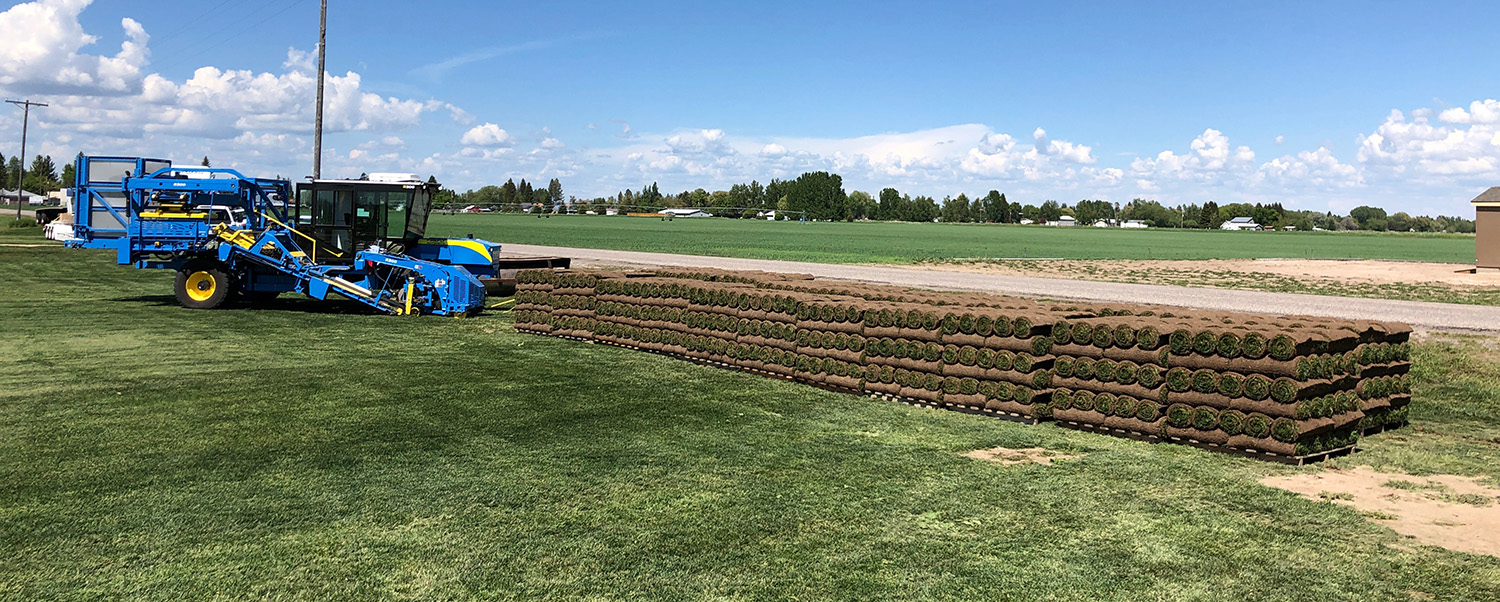Study Objectives
To compare productivity and fuel consumption of the electric stacking, single-head FireFly R300 and the hydraulic stacking, double-head Trebro AutoStack 3 in a day of real cutting conditions to provide data examining whether the much higher capital investment of double-head hydraulically-stacking machines is justified for high production operations.
At a glance
Despite different lengths of runs and allowing for different cutting durations, the R300 and AS3 cut with fairly comparable productivity in both wet and dry conditions. However, the R300 used about half as much fuel per pallet as the AS3.
Conditions
The 8-hour harvesting session began at 7:00 am at a turfgrass farm in the UK with a FireFly R300 and an Trebro AutoStack 3 (AS3) cutting in the same fields.
Fine fescue/perennial rye grass mix, non-netted
Mostly sandy loam with slight undulations side-to-side. Although the ground was somewhat bumpy, it didn’t effect the harvest much. Wet areas with more clay in the first field slowed down both harvesters. The second field was drier and sandier.
Cold, windy, and cloudy
It rained off and on throughout the day.
The farm was cutting 1 square meter pieces, mostly for 86-roll pallets, with a small number of 40-roll pallets. Close to 6 hours were spent in one field, with the remaining 2 hours spent in a second field.
For 6 hours, the AS3 cut longer lengths in drier areas, while the R300 went through some wet clay and made more turns in a triangular section.
The R300 was used in a wetter segment of the first field, where it cut through some wet areas and skipped others. The segment was triangular, starting with runs of about 1.5 pallets and decreasing in length until it was only about 1 piece long. Conversely, the AS3 cut a rectangle in a drier segment of the field, with runs about 3 pallets long, which would be expected to yield higher productivity. For the last two hours of the day, the harvesters were moved to a drier, sandier field.
For an hour and 15 minutes, the R300 cut longer runs while the AS3 cut headlands. For the last 45 minutes, the R300 was used to cut 10 small pallets, while the AS3 was stopped.
Overall, both harvesters cut in long and short segments. The AS3 cut in more dry segments with longer runs, but was also stopped for a time.
Data

Results
Although both harvesters stacked quality pallets, the farm staff noted that the R300 pallets were noticeably more square and with more consistent flaps. The R300 cut more pallets overall. Even allowing for the longer cut time, the R300 was 6% more productive than the AS3.
Productivity was fairly comparable between the two harvesters, with the R300 cutting slightly more grass per hour. However, the R300 was dramatically more fuel efficient, consuming 45% less fuel per hour as the AutoStack 3 with half the cost per pallet.




